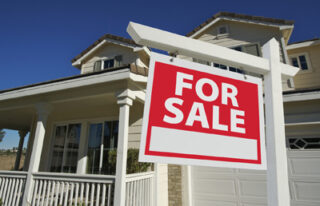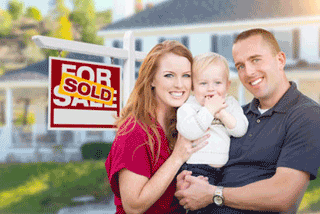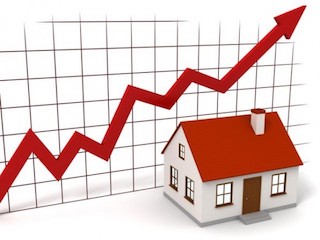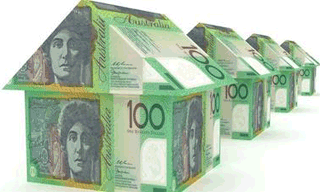Quote of the Week
“Home ownership preferences have evolved since the start of the pandemic, with Australians seeking more space, peace and quiet, as well as properties which offer outdoor living like backyards and balconies.”
Anthony Hughes, managing director of mortgages at Westpac
Owners Exploit Sellers’ Market
 With buyers outnumbering sellers and prices rising, an increasing number of home-owners are planning to put properties on the market.
With buyers outnumbering sellers and prices rising, an increasing number of home-owners are planning to put properties on the market.
Research commissioned by Westpac surveyed 2,086 Australian home-owners and found 35% of home owners want to sell in the next five years, with 12% already in the process of listing or planning to do so this year. Westpac’s senior economist Matt Hassan says it’s “absolutely a seller’s market at the moment”.
“Sales have seen a big lift over the last four months and are up over 36% on a year ago, resulting in a significant tightening in supply with listings across the major capital cities now at a 12-year low,” he says.
Most home-owners (87%) plan upgrades before selling, spending an average of $32,000 on projects such as minor repairs (44%), fresh paint (44%) or kitchen upgrade (19%).
Anthony Hughes, managing director of mortgages at Westpac, says property aspirations have shifted in the last 12 months: one in five home owners are selling for reasons related to the pandemic, such as working from home more (11%) and seeking more space (25%).
FHB Market Share Up 50%
 Much of the demand that has allowed property markets to defy the 2020 doomsday predictions has been driven by first-home buyers.
Much of the demand that has allowed property markets to defy the 2020 doomsday predictions has been driven by first-home buyers.
The Real Estate Institute of Australia says FHBs increased their market share 50.4% over 2020, motivated by the high level of government incentives on offer.“Seeing this trend in conversion to home ownership is particularly great news given the challenges many tenants and investors faced over the pandemic,” says REIA president Adrian Kelly.
He says, however, that surging house prices could impact housing affordability
unless measures to improve supply are implemented. Kelly says the proportion of income required to meet loan repayments has increased to 34.8%, up 0.9 percentage points.
NSW is the least affordable state, with 44.6% of income required to meet loan
repayments. The Northern Territory is the most affordable with the proportion of income required to meet loan repayments 21.9%.
High End Prices Start To Surge
 CoreLogic says the pace of growth at the high end of the market is “a striking feature” of the latest price data.
CoreLogic says the pace of growth at the high end of the market is “a striking feature” of the latest price data.
The high end is the top 25% of property values and refers to dwelling values at around $960,000 or higher for the combined capitals. In February, the top 25% in the combined capital cities rose 2.7%, led by growth in Sydney, Melbourne, Brisbane and Canberra.
“This was up from an increase of 0.5% in January,” says CoreLogic’s Eliza Owen. “The high end of the market clearly led growth in values over the month. The middle 50% of dwelling values increased 1.5% and the low end of property values increased 1.2%.”
Owen says the uplift at the top end follows a deeper downturn during the height of COVID restrictions. In 2020, the top tier had a peak-to-trough decline of 4.3%.
The low end of the market in the capital cities covers dwelling values sitting under $500,000. “The resilience at the low end during the downswing tends to be a common cyclical pattern,” she says.
Big Banks Tip Lengthy Boom
 ANZ CEO Shayne Elliott says the housing boom could go on “for quite a while” given the high demand and ease of securing credit.
ANZ CEO Shayne Elliott says the housing boom could go on “for quite a while” given the high demand and ease of securing credit.
House prices grew nationally by an average of 2.1% in February and economists, including Commonwealth Bank’s Gareth Aird, are predicting that house prices nationally will rise 16% in the next two years.
CBA predicts prices will lift 9% in 2021 and 7% in 2022. Given that several markets nationally – including Canberra, Hobart, Darwin, Regional NSW, Regional Tasmania and Regional SA – are currently growing at annual rates well above 10%, these forecasts may be conservative.
Elliott says the question of whether the boom is healthy depends on where you sit in the market. “If you’re an owner, it probably feels pretty healthy,” he says. “If you’re trying to get into the market, it probably doesn’t.
“I think extreme moves, either up or down, are never very good if they’re sustained for a period of time. So, it’s starting to get into that area where people are starting to raise a few eyebrows, wondering if it’s a bit unhealthy at these levels.”
HomeBuilder To Cost $2bil-plus
 The Federal Government is likely to spend more than $2 billion in HomeBuilder grants, with application numbers expected to top 100,000 by the end of March.
The Federal Government is likely to spend more than $2 billion in HomeBuilder grants, with application numbers expected to top 100,000 by the end of March.
At its launch in June last year, the Government said it expected 27,000 Australian households to access a grant and budgeted the program at about $680 million.
But new figures show 88,264 had already applied by February 26, which would account for $2.075 billion in grants if all are successful.
Those who applied for a grant last year will receive $25,000, while those who applied this year will get $15,000 — provided they meet criteria relating to income, the value of works and starting work within six months.
Housing Industry Association chief economist Tim Reardon says there will be a surge in applications late this month, as builders and homebuyers have delayed signing contracts to give themselves to the end of September to commence construction.




